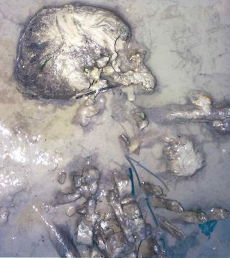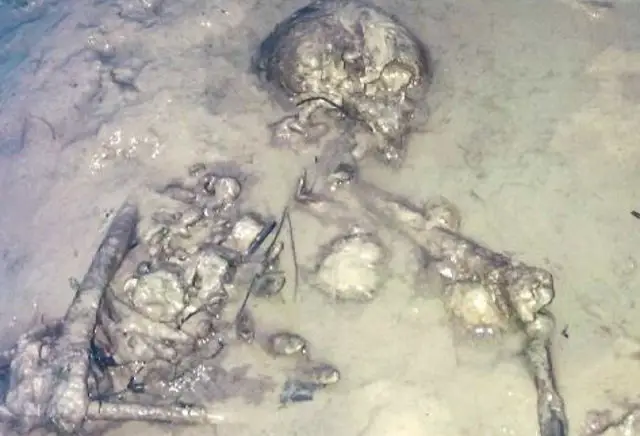Sam shares details of this fascinating find off the Isle of Wight. Ed
The bones of a woman who lived 2,000 years ago, and found in a bay off the Isle of Wight, are to be gifted to Island’s museum.
Brothers, Hubert and Graham Smyth discovered the skeletal remains as they set a string of swinging boat moorings at Fishbourne Beach at low tide on 9 March 2015. The bones were in the silt which is under the waterline when the tide is in.
Graham Smyth, who is a radiographer, gently lifted out one of the bones and was confident it was a human radius, so he left the rest of the skeleton in situ and called the police.
As many bones as possible were recovered
Caroline Sumeray, a barrister with No5 Chambers and HM Senior Coroner for the Isle of Wight, takes up the story.
“A decision was made to recover as many of the bones as possible from the surface of the mud before the tide came in. The remains were lying on their left-hand side in a foetal position with the arms up against the chest and the legs bent at roughly 90 degrees to the body. There was no clothing or any other object attached or adjacent.
“My first job was to establish if this was a recently deceased person or something a little older – possibly from a long washed away graveyard attached to the nearby Quarr Abbey. If the body was recently deceased, I needed to rule out an unnatural death.”
Ancient female bones
Home Office pathologist, Dr Basil Purdue, carried out a post mortem,  and reported that the bones were ancient, the remains of an adult human female who died almost certainly beyond living memory.
and reported that the bones were ancient, the remains of an adult human female who died almost certainly beyond living memory.
The cause of death could not be established but there was no evidence of injury or dismemberment.
Caroline said:
“The pathologist reported that her upper left arm bone and the left collarbone were significantly shorter than the right, possibly suggesting that she suffered either a congenital deformity, a right-sided stroke or other cause of muscle wasting that affected the left side of the body many years before death.”
To be certain of the age of the bones, radio-carbon dating was used.
Caroline said:
“The results stunned me. My lady is indeed a long time dead!”
The remains were dated to AD 28 to AD90 – almost 2,000 years old and from the Late Iron Age.
Caroline added:
“I consulted with the Ministry of Justice and don’t need a Home Office licence to bury her, and as such can give her to the local isle of Wight Museum. The Isle of Wight Council’s Heritage Service can accept these human remains and accession them as part of the Council’s Archaeology Collection.
“They will be appropriately and ethically stored and recorded as per national guidelines for the treatment of human remains. I think that’s going to be the best place for her.”





